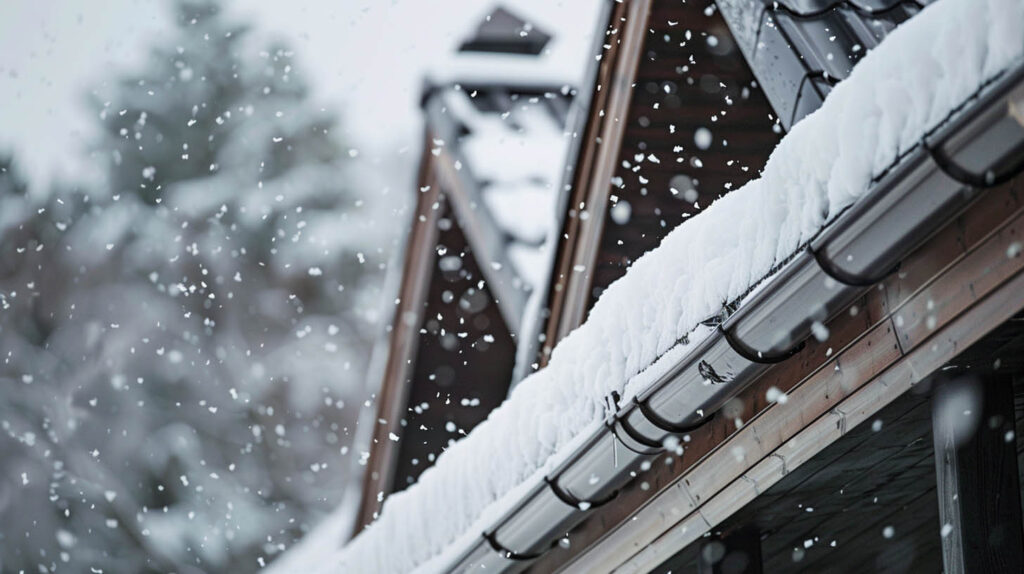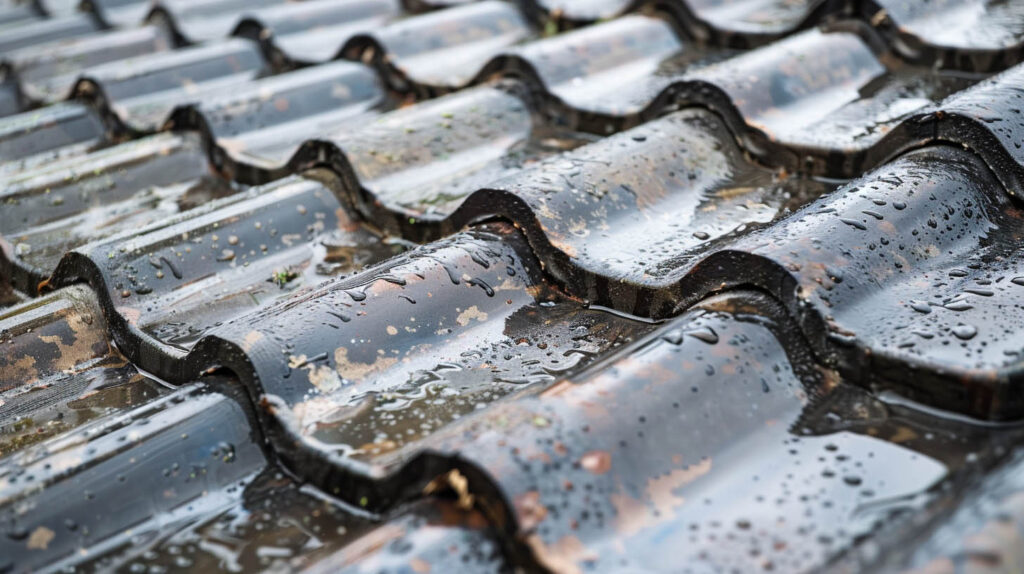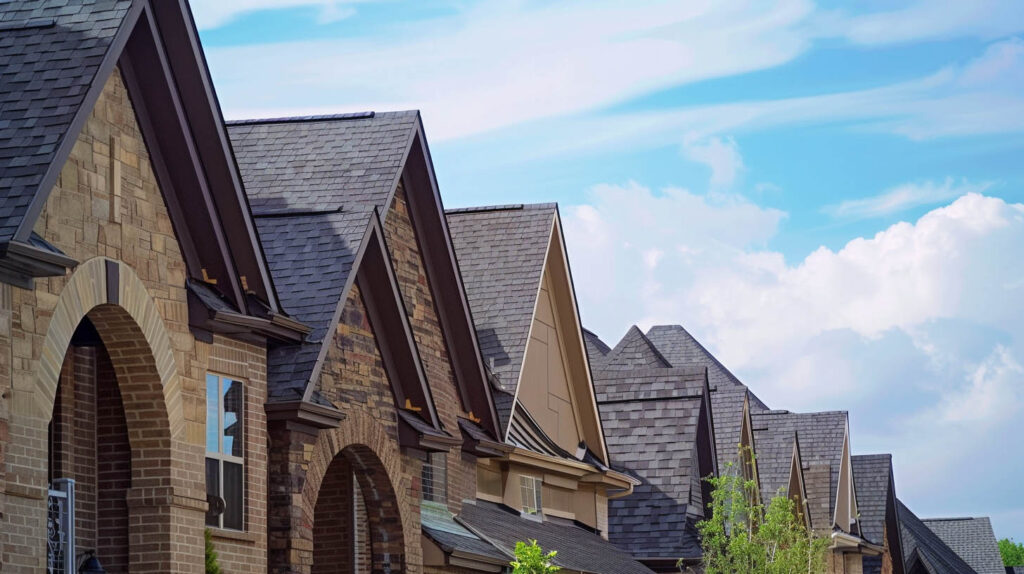How Hail Affects Different Roofing Materials
Hailstorms pose serious threats to roofing structures, causing hail damage that can compromise your home’s first line of defense against severe weather. Understanding how your roofing material responds to the impact of hail is crucial for maintaining its longevity and functionality. Specialist Roofing & Repair, offers award-winning solutions tailored to protect against hail damage in Burbank, CA. Knowing what to look for and acting swiftly ensures you’re prepared for the next storm while keeping your roof in excellent condition.
Understanding Hail and Its Impact on Roofs
Hailstorms, often part of severe weather conditions, can wreak havoc on roofs, dealing visible damage and weakening key structural elements. Hail impact varies across roof types, with asphalt shingles, metal roofing, and other materials showing different signs of damage.
Severe storms do not just bring wind and rain but also hailstones that range in size and force, which play a huge role in the potential damage to a roof. Being prepared to assess and address roof damage after hail ensures safety and long-term performance.
The Science Behind Hail Formation
Hail forms within cumulonimbus clouds during severe weather conditions. Updrafts propel supercooled water droplets upward, where freeze into ice pellets. As these pellets collide with more moisture-laden droplets, accumulate layers of ice, eventually growing too heavy for the updrafts to support. When the hailstones fall to the ground, their size—ranging from smaller hailstones to larger hailstones—depends on the strength of the updrafts and the storm’s overall intensity. Understanding this process can help homeowners prepare for potential roof damage.
How Hail Damages Roofing Structures
Impacts from hail can cause significant harm to various roofing structures, depending on hail size, speed, and frequency. Standard asphalt shingles may experience loss of granules, leading to a decline in roof integrity and increased risk of water damage. Meanwhile, metal roofing can sustain dents or punctures, particularly from larger hailstones, affecting their protective coating. Regular inspections post-hailstorm help identify signs of damage, ensuring timely repairs and preventing costly long-term issues associated with hail impact.

Factors Determining Roof Vulnerability to Hail
Roof vulnerability to hail damage is influenced by a combination of factors. One determinant includes the type of roofing material used, as not all materials respond to hail impact in the same way. Roofs with better hail resistance thereby reduce the potential threat from severe storms.
The extent of the damage also depends on elements such as the slope of your roof and its overall condition. Aging structures or roofs without proper installation are at an increased risk compared to newer, sturdier systems.
Hail Size, Speed, and Frequency
The physical properties of hailstones greatly influence the degree of risk posed to roofing materials. Larger hailstones, often exceeding 2 inches in diameter, can puncture weaker roofs, while smaller hailstones may cause minor damage like dents or granule loss.
Wind conditions also heighten the risks during hailstorms. High winds can accelerate hail, increasing its impact force, while frequent storms further deteriorate roofing materials over time.
Roof Age, Slope, and Installation Quality
Roof age significantly influences its resilience against hail damage. Older roofs may exhibit signs of deterioration, making more vulnerable during severe weather events. Additionally, the slope of the roof plays a crucial role; steeper slopes allow greater runoff, potentially minimizing hail impact. Installation quality cannot be overlooked, as properly installed roofing reduces the risk of significant damage. Regular inspections and maintenance practices ensure that any minor issues are addressed timely, safeguarding the integrity of your roof against future hailstorms.

Hail Damage on Asphalt Shingle Roofs
Asphalt shingles are among the most common roofing materials, but are particularly prone to hail damage. Hail impact often leads to granule loss, exposing the underlying fiberglass mat and weakening your roof’s layers. Minor damage may quickly accumulate, causing leaks or reduced durability.
Specialist Roofing & Repair recommends regular inspections to spot issues like dents and shiny elements early, ensuring that asphalt shingle roofs remain functional and ready to face severe weather.
Common Signs of Hail Impact on Asphalt Shingles
Identifying the signs of hail impact on asphalt shingles is crucial for maintaining the integrity of your roof. Look for visible damage such as granule loss or dents in the shingles’ surface, which can indicate the size and impact force of the hailstones. Additionally, check for dark patches or exposed fiberglass mats, signaling potential leaks or water damage. Regular inspections after severe weather can help homeowners detect cosmetic damage early, preventing costly repairs and ensuring long-term protection against future storms.
Longevity and Repair Considerations for Asphalt
While asphalt shingles are a cost-effective choice, hail damage can shorten their lifespan significantly. Timely repairs, from replacing cracked shingles to sealing exposed areas, protect the roof’s integrity. Ignoring repairs may lead to costly replacements.
Insurance claims often cover hail-related issues, depending on the extent of damage. A documented inspection by a roofing contractor simplifies the process, ensuring homeowners receive fair compensation.
For extended durability, consider reinforced asphalt options designed to mitigate hail impact. Regular maintenance keeps the roof in optimal condition.

Hail Damage on Metal Roofing
Metal roofing offers substantial hail resistance, making it an excellent choice for areas prone to storms. While capable of withstanding impact force better than other roofing materials, it isn’t entirely immune to damage. Hailstorms may lead to cosmetic damage like dents or coating loss, potentially affecting aesthetics.
Specialist Roofing & Repair in Burbank, CA, stresses regular maintenance as a proactive measure against severe weather impacts, showcasing the durability benefits of metal roofing solutions and their ability to provide better protection.
Dents, Punctures, and Coating Loss
Hailstorms can cause significant damage to metal roofing through dents and punctures, compromising the integrity of the roof. The impact force from larger hailstones often leads to visible cosmetic damage, while smaller stones may only result in minor issues. Coating loss is another concern, as protective granules are displaced, reducing the roof’s resistance to UV rays and water damage. Regular inspections after severe storms become a top priority to identify signs of hail damage and prevent costly repairs in the aftermath.
Metal Roof Resilience and Maintenance Tips
Metal roofing is a robust solution for hail-prone areas due to its durability and long-lasting performance. However, maintaining its resilience requires proactive care. Repairs for dents or scratched coatings should be executed immediately to preserve roof aesthetics and prevent rust.
Regular maintenance, including cleaning debris and checking for punctures, keeps your metal roof in good condition. Sealants applied to affected areas further enhance hail protection.
For long-term protection, consider advanced metal systems like stone-coated variants, which offer superior hail resistance and fewer cosmetic concerns.

Hail Damage on Tile and Slate Roofs
Tile roofing and slate roofs combine durability with visual appeal but can suffer severe damage in hailstorms. Hailstones may crack, chip, or dislocate tiles, leaving the underlayment exposed to potential leaks.
Specialist Roofing & Repair in Burbank, CA, advises homeowners to act promptly, conducting thorough inspections and repairs. Addressing hail damage as soon as it’s identified safeguards your investment and ensures the integrity of your roof.
Cracking, Chipping, and Surface Erosion
Tile roofing and slate roofs are susceptible to visible damage like cracking and chipping during severe weather events. Specific warning signs include:
- Fractures: Impact lines resembling broken pottery.
- Chipping: Edges splinter from hail impact.
- Surface Erosion: Weather exposure worsened by hailstorms leads to gradual material wear.
Ignoring these indications risks leaks and long-term structural issues. Regular hail damage inspections identify early signs, ensuring prompt and effective repairs.
Best Practices for Repairing Tile and Slate
Repairing hail-damaged tiles or slates involves precision to maintain your roof’s aesthetic and functionality. Professional inspection is essential for detecting unseen fractures that may compromise its integrity.
Cracked tiles should be replaced immediately, while chipped areas must be sealed to prevent erosion. Using protective coatings extends the lifespan of repaired slates and tiles. Routine inspection after a hailstorm strengthens the roof’s durability, offering peace of mind amid severe weather conditions.

Get in Touch
The aftermath of a hailstorm can significantly impact the integrity of your roof, regardless of the type of roofing material. Regular inspections are crucial in identifying signs of hail damage early on, helping to mitigate costly repairs and insurance claims. With the right protective measures, such as choosing hail-resistant roofing materials and scheduling thorough inspections, homeowners can enhance their roof’s resilience against severe weather. Our awards, including Owens Corning Platinum Preferred Contractor, Polyglass Quantum Contractor, and BBB A+ Rated, reflect our commitment to quality service. Staying proactive is key to ensuring your home’s first line of defense remains in excellent condition for future storms.
Frequently Asked Questions
How does hail affect a roof?
Hailstones can cause visible damage like dents, cracks, or granule loss, weakening your roofing structure. Minor issues often grow into water damage or costly repairs. Identifying signs like bruising or dislodged shingles after hail impact protects your home from further risks.
What is the best roof material for hail?
The best roof materials for hail resistance include metal, slate, and certain types of impact-resistant asphalt shingles. These materials can withstand hail impacts better than others, ensuring durability and longevity during severe weather conditions. Always consider local climate when selecting roofing materials.
What class of roofing is hail resistant?
Hail-resistant roofing typically falls into Class 3, 4, or impact-resistant categories. These materials, such as modified bitumen, metal, and certain tiles, are designed to withstand hail impacts effectively, reducing the risk of damage and extending the roof’s lifespan significantly.
Read our blog: Why Roof Algae Is More Than Just a Cosmetic Problem



